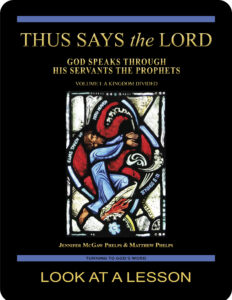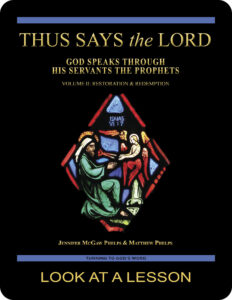invisible
 In his First Letter to Timothy 1:17 (NABRE), Paul describes God using a number of different terms: “the king of ages, incorruptible, invisible, the only God.” One of these is especially interesting in light of the relatively recent change to the translation of the Nicene Creed used during the liturgy.
In his First Letter to Timothy 1:17 (NABRE), Paul describes God using a number of different terms: “the king of ages, incorruptible, invisible, the only God.” One of these is especially interesting in light of the relatively recent change to the translation of the Nicene Creed used during the liturgy.
The newest liturgical translation of the Creed changed the word “unseen” to “invisible.” At first glance, this change seems unnecessary, but upon further investigation, there actually is a significant difference between these two concepts. Anything not currently within my range of sight can be called unseen because I’m not looking at it, even if it would be visible if it were within my sight. Something invisible, by contrast, could be within my sight, but I still would be unable to see it. Things that are invisible are things that can’t be seen.
The Greek word that Paul uses in his First Letter to Timothy is ἀόρατος (aoratos) and can mean either not see-able or not seen. Which meaning do you think it is that Paul intended?
you also may like our two-part study of the prophets

 Thus Says the LORD: God Speaks Through His Servants the Prophets—Volume I: A Kingdom Divided examines the prophets in their historical context using the First and Second Books of the Kings and other Old Testament passages written before the Babylonian Exile in 586 B.C. Volume II: Restoration & Redemption looks at the post-exilic prophets. This 51-lesson Catholic Bible study builds on The United Kingdom of Israel: Saul, David & Solomon Foreshadow Christ the King. Click on the books’ covers to view a sample lesson from each volume.
Thus Says the LORD: God Speaks Through His Servants the Prophets—Volume I: A Kingdom Divided examines the prophets in their historical context using the First and Second Books of the Kings and other Old Testament passages written before the Babylonian Exile in 586 B.C. Volume II: Restoration & Redemption looks at the post-exilic prophets. This 51-lesson Catholic Bible study builds on The United Kingdom of Israel: Saul, David & Solomon Foreshadow Christ the King. Click on the books’ covers to view a sample lesson from each volume.
 Click on the picture of the statue of Moses with horns (above) to learn more about Lost in Translation. A new entry is archived each Monday. Contact us to receive Lost in Translation by email every week. You may use any of the contact links on our website to ask Matthew a question.
Click on the picture of the statue of Moses with horns (above) to learn more about Lost in Translation. A new entry is archived each Monday. Contact us to receive Lost in Translation by email every week. You may use any of the contact links on our website to ask Matthew a question.
